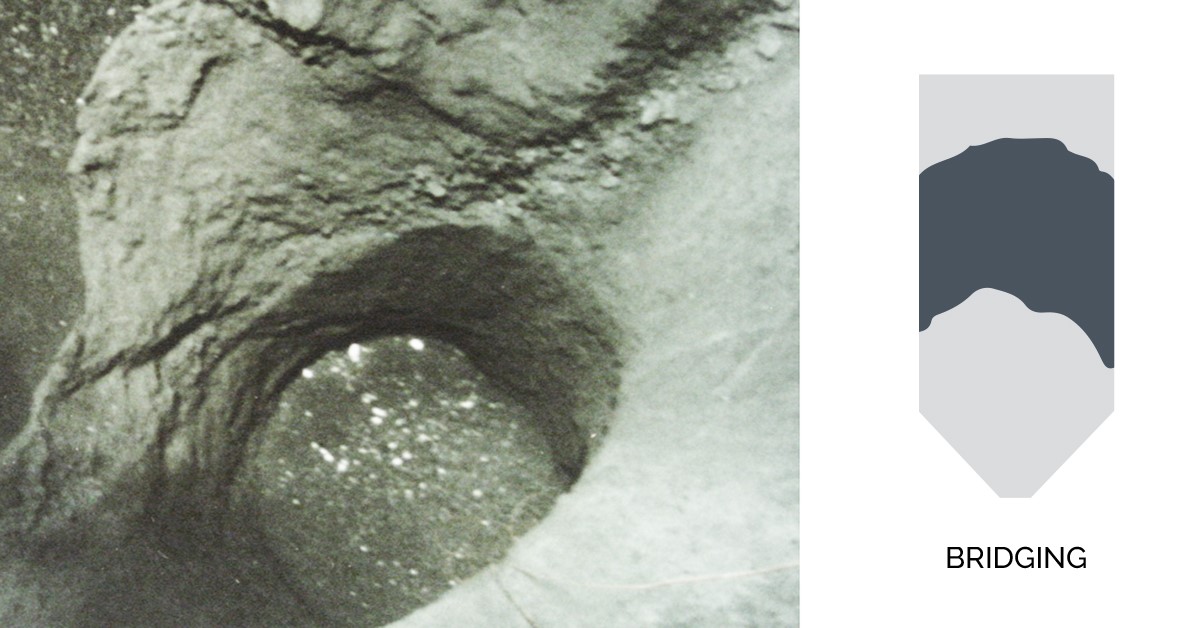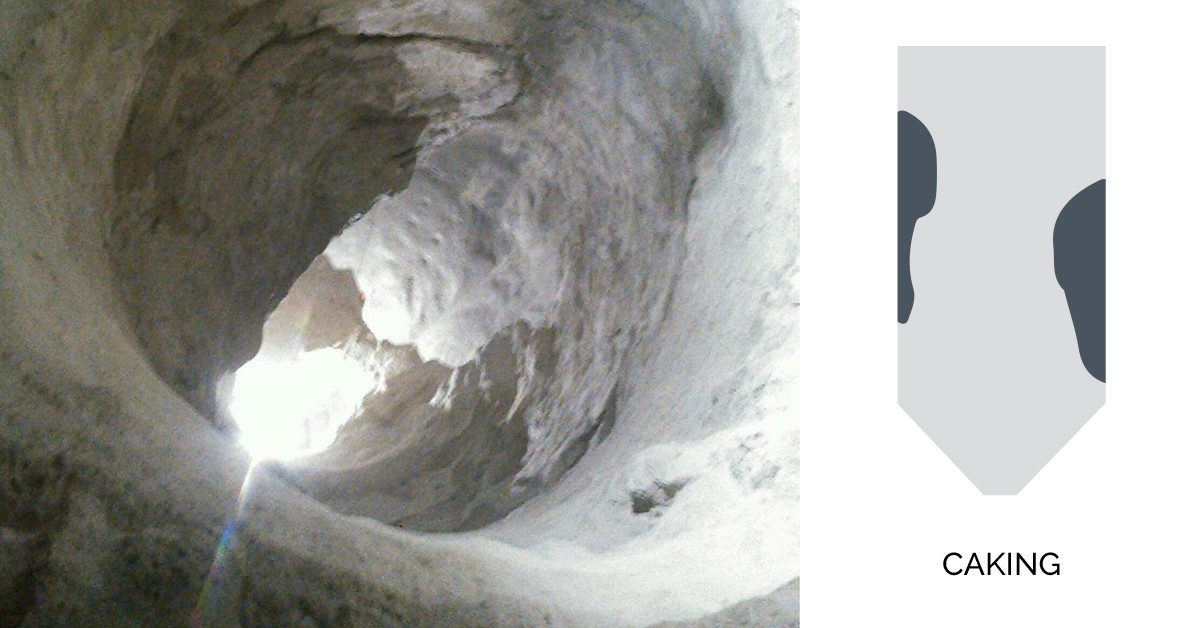December 7, 2020
Steel silo construction is widely applicable to both industry and agricultural uses. Whether storing grain or fly ash, steel silos — like all storage silos — must keep stored materials safe until they are needed for use. As with other silo designs and stored materials, steel silos are likewise susceptible to material flow issues, leaking or other failure and require regular, routine maintenance.
When it comes to maintaining your bolted steel silo, it's essential to check for corrosion and leaking issues. Over time, all steel silos are susceptible to corrosion. When evaluating your steel silo, it's important to check the amount of corrosion on the wall at the joints to identify potential leaking. Because moisture can accelerate corrosion, it's also important to examine the silo foundation or base for signs of stagnant, sitting water.
Leaking steel silo joints can also be caused by weak spots in the seam as a result of an aging gasket. The gasket, located between the flanges on bolted steel silos, tanks or vessels can become dry and brittle over time, allowing moisture in or stored material out. Temperature and pressure differential from pneumatic loading or negative pressure from dust collection systems can also compromise the integrity of the seam.
Our Solution
When you have corrosion and leaking issues present, it's essential to have the bolted seams professionally repaired. Following inspection, Marietta Silos' repair consists of caulking all the seams, both vertical and horizontal. Once the caulking has dried, a rubberized coating material is sprayed over the caulking at the joints. This resilient coating bonds directly to the steel to restore the efficacy of your storage silo. Unlike other coatings that act as a floating membrane, the rubberized coating withstands the normal fluctuations encountered at silo seams, protects against corrosion and withstands temperature and weather extremes. The repair process offered by Marietta Silos reduces or eliminates leaks in bolted panel seams.
To learn more, be sure to check out our full library of
silo videos on silo maintenance, inspection and repair on

.
Posted by Dennis Blauser, November 2, 2020
Storage silos are used in almost every industry to store materials safely until they are needed for use, but no matter the design or the materials stored, silos are susceptible to material flow issues caused by blockages.
Blockages not only lead to a reduced storage capacity and disrupted or slowed operations, they also promote bad flow characteristics. When material flow is off, delamination, exterior concrete cracking and structural failure can result. There are numerous blockage types possible in storage silos, two common flow issues are bridging or caking.
If there is a blockage and your silo is plugged, here's how to know whether it's related to bridging or caking.
Bridging

When material is poured into the storage silo it exerts pressure on the material under and around it, and with some materials, this surrounding pressure can cause a structural bond. This bond results in a bridging effect, where the bottom of the bridge empties but a dome arch remains, preventing any further material from flowing. As more material is dumped on top of the bridge the pressure exerted increases and the bonds holding the bridge together will actually become stronger.
Caking

Caking occurs when powder, such as detergents, fertilizers and salts, become cohesive after storage, forming agglomerates comprised of individual particles that are bonded together. Caking results when the magnitude of interparticle forces increase over time. The most common cause of caking is moisture migration due to temperature changes with materials that are soluble. Caking creates resistance to flow in silos and can result in residue on walls.
You can help reduce the likelihood of material build-up through a number of ways, click
here to watch and learn more. Depending on how easily stored material compacts or hydrates, your silo may need to be completely emptied on a regular schedule as often as once a month or as little as every year.
Silos that are regularly emptied and refilled are less likely to experience build-up issues than in those kept topped off. Regularly emptied silos need professional
cleaning less frequently in comparison. They are also less likely to experience issues like compacting and hydrating. Hydration occurs when moisture mixes with stored materials and causes them to solidify within the silo. When this happens, materials can expand and cause added wall pressure, increasing the likelihood of structural failure.
The routine examination of your silo is only effective in increasing facility safety and ensuring smooth operations when it is conducted in conjunction with professional
cleaning and
inspection services as part of a regular preventive
maintenance schedule.
Whether you have bridging, caking or plugging of any stored material, it’s essential to contact
USA Silo Service, a division of the Marietta Group, which includes Marietta Silos and Marietta Inspection Services, to have the build-up removed quickly. This
recent case study shows USA Silo Service using their proprietary equipment and
cleaning methods to remove coal build-up in a silo and greatly improve material flow.
Posted by Dennis Blauser, October 1, 2020
The two most common systems for constructing a concrete silo are Jumpform and Slipform. Concrete storage silos from 10' to 65' in diameter can be built using the Jumpform technique, while Slipform silos are best for construction projects over 65' in diameter.
Jumpform construction is one of the most flexible silo construction methods available in the industry today. So is the Slipform method. There are absolutely no shortcuts to either method because safety and performance remain at the forefront of every silo project. So, what determines the construction approach?
Jumpform construction is not as time sensitive as Slipform. Jumpform is completed in stages, offering some economies of scale associated with equipment installation, reinforcing steel assembly, rebar inspection and concrete pour to cure.
Jumpform can be the most economical construction choice. The form can be set-up and ready to make the first pour of concrete within a week. Because Jumpform is poured in increments, pour costs can be reduced by as much as 20% over Slipform construction where a continuous pour is required.
The Jumpform silo framework is reusable. It takes just a few days to set up after delivery to the job site. This form provides a safe, circular deck to access and erect the silo from the interior, creating a smaller job site footprint. When construction is finished, the form is quickly removed from the job site.
Marietta Silos' standard Jumpform horizontal construction joint detail creates a leak-proof joint system and is the best choice for concrete storage silos less than 65’ in diameter. Jumpform silos are poured in multiple sequences as opposed to a single sequence in the Slipform method. Therefore, an allowance in the time schedule permits a thorough quality control inspections of the Jumpform, steel reinforcements and embedments. Only then is the concrete segment poured.
Marietta Silos is the only Jumpform manufacturer in the country that complies with OSHA 125' scaffolding requirements.
While Jumpform is an ideal method for building concrete silos less than 65' in diameter, Slipform construction offers many advantages in larger scale silo design and construction; these are described separately.
To learn the step-by-step Jumpform process and to understand its efficiencies, watch our Jumpform silo video.
Check out our full library of silo inspection videos on silo maintenance, inspection and repair on our  .
.
 When material is poured into the storage silo it exerts pressure on the material under and around it, and with some materials, this surrounding pressure can cause a structural bond. This bond results in a bridging effect, where the bottom of the bridge empties but a dome arch remains, preventing any further material from flowing. As more material is dumped on top of the bridge the pressure exerted increases and the bonds holding the bridge together will actually become stronger.
When material is poured into the storage silo it exerts pressure on the material under and around it, and with some materials, this surrounding pressure can cause a structural bond. This bond results in a bridging effect, where the bottom of the bridge empties but a dome arch remains, preventing any further material from flowing. As more material is dumped on top of the bridge the pressure exerted increases and the bonds holding the bridge together will actually become stronger. Caking occurs when powder, such as detergents, fertilizers and salts, become cohesive after storage, forming agglomerates comprised of individual particles that are bonded together. Caking results when the magnitude of interparticle forces increase over time. The most common cause of caking is moisture migration due to temperature changes with materials that are soluble. Caking creates resistance to flow in silos and can result in residue on walls.
Caking occurs when powder, such as detergents, fertilizers and salts, become cohesive after storage, forming agglomerates comprised of individual particles that are bonded together. Caking results when the magnitude of interparticle forces increase over time. The most common cause of caking is moisture migration due to temperature changes with materials that are soluble. Caking creates resistance to flow in silos and can result in residue on walls.![]() .
.




